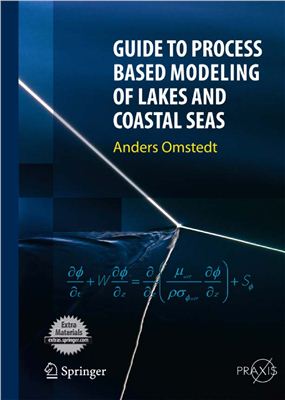Springer-Verlag Berlin and Praxis Publishing, 2011, 281 pages
Mounting conce about the influence of humans on climate and environmental conditions has increased the need for multi-disciplinary modeling efforts, including systems such as oceans, costal seas, lakes, land surfaces, ice, rivers and atmosphere. This unique book will stimulate students and researchers to developtheir modeling skills and make model codes and data transparentto other research groups. The book uses the general equation solverPROBE to introduce process oriented numerical modeling and tobuild understanding of the subject step by step. PROBE is a generalequation solver for one-dimensional transient, or two-dimensionalsteady, boundary layers. By the construction of nets of sub-basins thebook illustrates how the process based modeling can be extended,complementing three-dimensional modeling. The equation solver hasbeen used in many applications, particularly in Sweden and Finlandwith their numerous lakes, archipelago seas, fjords, and coastal zones.It has also been used for process studies in the Arctic and in theMediterranean Sea and the approach is general for applications in manyother environmental applications.
Background physics and biogeochemistry
Physical aspects
Biogeochemical aspects
Construction of nets of sub-basins
Solutions manual
Mounting conce about the influence of humans on climate and environmental conditions has increased the need for multi-disciplinary modeling efforts, including systems such as oceans, costal seas, lakes, land surfaces, ice, rivers and atmosphere. This unique book will stimulate students and researchers to developtheir modeling skills and make model codes and data transparentto other research groups. The book uses the general equation solverPROBE to introduce process oriented numerical modeling and tobuild understanding of the subject step by step. PROBE is a generalequation solver for one-dimensional transient, or two-dimensionalsteady, boundary layers. By the construction of nets of sub-basins thebook illustrates how the process based modeling can be extended,complementing three-dimensional modeling. The equation solver hasbeen used in many applications, particularly in Sweden and Finlandwith their numerous lakes, archipelago seas, fjords, and coastal zones.It has also been used for process studies in the Arctic and in theMediterranean Sea and the approach is general for applications in manyother environmental applications.
Background physics and biogeochemistry
Physical aspects
Biogeochemical aspects
Construction of nets of sub-basins
Solutions manual

